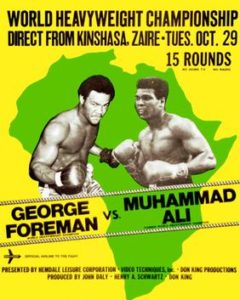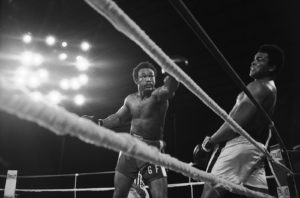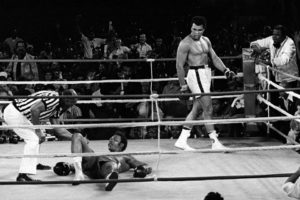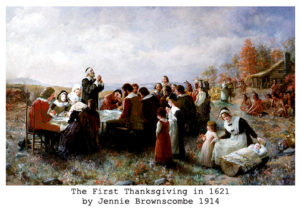At an early age, I knew that I was going to be athletic-minded. I used to say to my father “I am immortal until proven otherwise!” and, much to his consternation and that of my mother, set out to prove the point by engaging in a number of risk taking (read: stupid) activities. More constructively, from the age of seven I played sports, lots of them. I played team sports and I played individual sports. I ran, I swam, I rode bikes and I raced around fields throwing, catching and kicking balls. Those balls were big and small, oval and round, and I waved an assortment of sticks at them when duty required. Â Heck, I even tried ice hockey even though I could not skate: the team made me a maskless goalie on sneakers while I learned to skate until I realised that was a losing proposition.
I Â boxed and I tried judo. I was a gym rat that lifted weights and even tried body-building for a decade or so. I loved to run trails, desert washes and beaches, preferably barefoot on the latter. I enjoyed the camaraderie of team sports and the solitude of the long distance runner. I got hurt a fair bit and I lost more than I won, but it was the act of competing, of testing my limits, that I most enjoyed. As I say to my kids, there is honour in losing so long as you make the other guys work hard for their win. After I had to give up team sports I endurance raced in order to justify my (compulsive) training, was a referee/umpire and coach in a couple of sports for a while and even surf lifeguarded to hone my open water skills and contribute to the community in which I now live. I also was able to engage in physical activities connected to government service before I moved to NZ, something that complemented my sports-minded approach to life.
Although my physical decline began with injuries dating back to the 1970s, things really began to unravel about ten years ago when I had a near-death experience that ended my competitive endurance racing life. Five knee surgeries had already given me a noticeable limp, and osteoarthritis in my feet, knees and shoulders made doctors comment that my X-rays looked like that of an 80 year old rather than a 40/50/60 year old. I ate aspirin like cereal and served as a involuntary guinea pig for the testing of assorted balms, lotions and other muscle and skeletal ache remedies.
With weight bearing activities no longer possible, I switched to indoor machines and eventually set up a home gym with stationary bikes, a rower and an elliptical machine. I spun, I glided and I rowed to the tune of thousands of songs, something I would never do when training outdoors. I was determined to make the most of what I had left in me, and enjoyed being able to use music as an external displacement/disassociation  training method rather than the internalisation/association techniques that are the stock of endurance athletes (where you go inside yourself to monitor your body’s performance rather than diverting attention into things like music).
While rowing two years ago I felt a twinge in my hip. I rested for a week, then resumed, only for the twinge to come back, this time a bit more sharply. Over the course of the next months that twinge turned into a constant sharp pain in my left side. It eventually started to affect my gait, as it became difficult to walk uphill or downhill (particularly the latter). I eventually stopped gong to the pool, not because I could not swim but because the walk from the parking lot was too painful and I was too unsteady on my feet on the damp surfaces of the pool decks and changing rooms.
Based on what I described, my GP prescribed industrial strength ibuprofen and paracetamol, but that only dulled the pain. Eventually, I had to stop trying to exercise as inevitably something would tweak and I would be immobilized for days. The more I was unable to exercise the more I put on weight while my legs atrophied. It was a vicious circle.
A few weeks before leaving to the US last July and at the insistence of my wife I told the GP that I was in fact barely mobile because of the hip pain. She ran some basic tests and said something to the effect of “your hip is munted.” The trouble was that my family and I were leaving on a five month sabbatical to the US and so there was nothing that could be done until we got back to NZ other than to eat painkillers. And so I did.
What I did not anticipate was that I would continue to deteriorate exponentially. I was walking with difficulty when we arrived at our place in Florida. A month later, when we moved to Boston, I could barely walk two blocks without having to stop and rest. A month into the Boston stay I couldn’t walk more than 100 meters, and a month after that I could not go even 20 meters without having to stop and do pain management. My wife bought me a walking cane and I began to use it. It was not enough.
All the meticulous planning for the division of labour while we were in Boston, where I was the designated support person, evaporated once we got there. I could not use pubic transport to shoulder my responsibilities as the primary caregiver, since even with the cane I could not get to the nearest bus stop in order to take the kid to the twice weekly pre-school we enrolled him in. Nor could I shop at the local grocery without assistance from strangers. By the time we left Boston I could not push a mop without having to take multiple breaks. That left everything in terms of domestic chores to the person who was there to do research and write, and that was not me. My physical condition became, and is, a family problem.
As part of the sabbatical we had a number of pre-booked domestic flights to take (we wound up taking 10 flights and spending 51 hours in the air during that trip). Â By mid-October I could no longer walk through airport terminals even with the cane and started having to be wheeled from the check-in counters to the gates. Not only did I find that humiliating and a tremendous burden on my wife and four year old, but I discovered that many people simply do not see or dislike disabled folk and consider them nuisances or obstacles in their way. Making inter-terminal and rental car transfers were a nightmare, and contrary to popular belief, not all of my wheelchair bound passage was expedited by the TSA security people. Sometimes I got waved through, sometimes I was made to stand and go through the regular screening process, sometimes it was a little bit of both.
It was heartbreaking to see my old US friend’s faces when they set eyes upon me. The had images of me in my “prime,” and instead they got a hobbled shell of the guy that used to be. Although mellowed by experience, I still have the same persona, the same ideas, the same outlook on life as twenty or even thirty years ago, but the shell is not the same. It pained me to see how distressed my old friends were at the sight of me bent over on a cane at their doorsteps.
In December I presented myself to NZ Immigration in a airline-supplied wheelchair with a grumpy kid and a heavily backpack laden, sleep deprived Mom in tow. The arrangement with Air NZ, as far as I can tell, Â is that they wheel people to the arrivals terminal greeting space. After that things are by private arrangement, including disposition of the the service chair in parking lots.
By the time we came back to NZ the hip pain had spread to the other side and lower back (it turns out that is typical of “end state” hip osteoarthritis). The day after we got back I saw my GP, who referred me for X-rays the next week. They showed that my left hip has no cartilage left and is bone-on-bone with spurs growing in the joint. The right hip is half as bad. Armed with that information, I was referred to a hip replacement specialist. I am now scheduled to have hip replacement surgery sometime in the next month or so.
When I saw the orthopaedic surgeon in early February the pain was constant and continues through the night. I was prescribed Tramadol, which again dulls but does not eliminate the pain even when taken in combination with other non-opioid pain relief. The hip is now structurally failing at inopportune times such as stepping from the porch to the footpath leading to the garage, to which can be added regular knee buckling when I overcompensate by putting most of my (over) weight on my right side.
There is no getting around the pain and structural failures. Consequently, we have curtailed our social activities away from home because I have great difficulty in accessing venues, and even disabled parking places are often too far from the destination for me to walk without stopping or assistance (I have a temporary disabled placard for the car, something that has introduced me to the special type of lowlife known as the able-bodied disabled parking space squatter). I try to avoid too many trips to the kitchen or bathroom because it hurts to get up and do the short walk to them. In effect, I am trapped in my body and pretty much homebound, using the car as wheelchair, the cane as a prop and relying on family and friends to help with simple chores. That sucks.
The real issue and the point of this post is pain. Pain robs one of the joy of life and even, after a while, of the will to live. Pain makes one timid, fearful that the next step will bring more injury and worse pain. Pain makes one irritable and short-tempered for no apparent reason. My ever patient and long suffering wife says that my smile is more often a wince these days. Pain makes one cynical, gloomy and pessimistic. Pain is an energy-sapping, tupor-inducing drain on life. It robs personality spark and it cripples spirit. If it cannot be stopped by medical intervention, it invites remedy by other means. Ever-present, pain is an all-encompassing, quality of life-ruining curse.
It ruins lives in many ways. I find myself getting short with my four year old when he is just being a kid and snap at my wife over silly or minor things. I increasingly dislike noise. I am mean-spirited more often than not. I feel envious of the able-bodied and am frustrated that I cannot chase my boy around the paddock or no longer do some funky chicken dance with him to the tune of the old roundtable or Mom’s CDs. The sum effect is to sink into a funk, although I am lucky in that I, for reasons known only to the goddess, have more of an optimistic than depressive personality. Â But that does not mean that I am fun to live with in my current state. Because I, my friends, am a grumpy old man.
Hopefully all of that will end once I have the hip emplacement surgery. I am relatively young and am told that the pain goes away immediately, and that after the physical rehabilitation work I should be back to near-normal (that is, no more Ironman but I will be able to throw and kick balls with the kid and yes, trot after him when doing so). I sure hope so, and hope is my friend at this point.
But for others not as fortunate as me, hope may not be enough or no longer be possible. So please spare a thought for grumpy old men and women. Be it as a result of sports injuries, hard physical labour, chronic illness or accidents, many senior people are not irritable by choice. They too, are products of their pasts and they too are trapped in bodies that bear the physical consequences of lives spent in something other than splendorous leisure. Showing them empathy and compassion may not take away their pain, but it will at least show them that you share the understanding of what it does to them.
That is the best palliative of all.





 Buchanan family Thanksgiving table in The Barn, Holliston, MA.. Photo courtesy Kathy LaCroix Buchanan
Buchanan family Thanksgiving table in The Barn, Holliston, MA.. Photo courtesy Kathy LaCroix Buchanan
